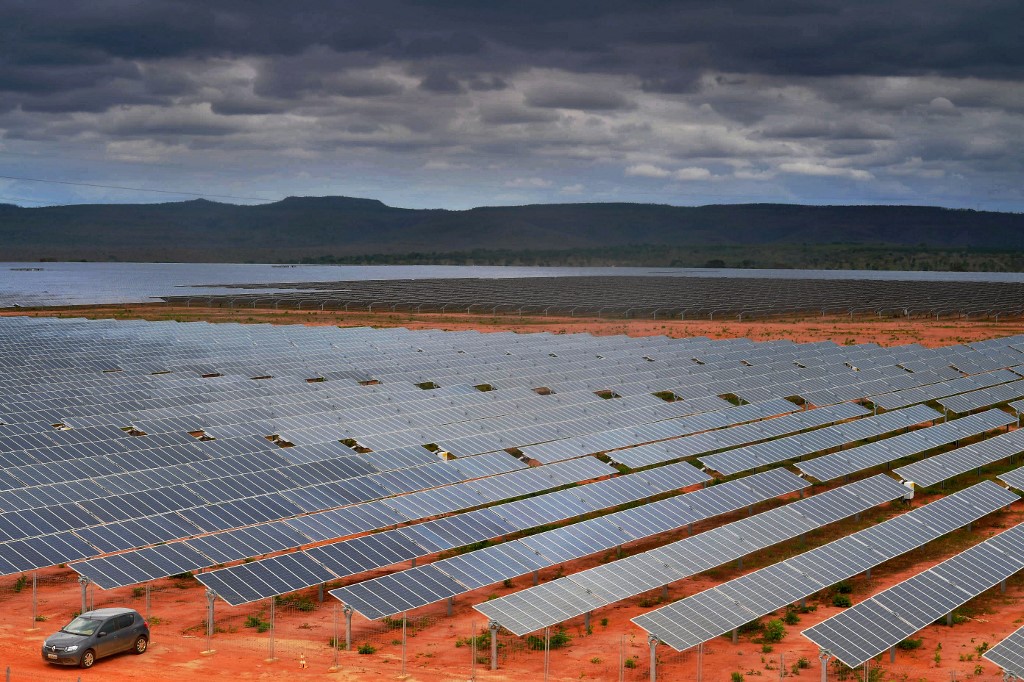São Paulo – The use of solar power in Brazil has been gaining strength in recent years. From 1,160 gigawatts of capacity installed in 2017, the country jumped to over 11,000 gigawatts this year. The historical mark was reached last month. The number accounts for photovoltaic energy produced by large plants and small and medium-sized systems installed on roofs, facades, and lands. The information is from the Brazilian Association of Photovoltaic Solar Energy (Absolar). Pictured above, a solar plant in Pirapora, Minas Gerais.
The solar source now occupies fifth place in the Brazilian power grid. Absolar data shows large plants led the sector’s advance until 2019. “The year 2020, despite the pandemic, had a record growth for solar energy in our country, and for the first time, the small-sized (distributed) generation grew more than the large plants and took the first position,” reported Rodrigo Sauaia, president of the institution.
In a telephone interview with ANBA, Sauaia explained the price of installing solar energy kept consumers away until a few years ago, but that reality has been changing. Factors such as the higher number of suppliers, access to credit lines focused on the solar system, and, on the other hand, the upsurge in the cost of electricity bills have contributed to the reputation of photovoltaic energy.
Incentives reduce expenses
The perspective is for solar energy demand to grow until April 2022, when extra costs for the water shortage will still be applied to Brazilian’s electricity bills. “The impact of the water crisis was tremendous. The average cost of electricity bills rose 20%, way above inflation. The price of solar energy, in the last ten years, decreased by 80%. This boosted society’s interest in producing its energy. The projection is for this year to be record-breaking,” concluded the president of Absolar.
Read also:
- Brazilian irrigation system in Sudan is solar-powered
- Egypt among most attractive markets for renewable energy
In the state of Paraná, the financial aspect was also one of the reasons encouraging the use of clean energy in the countryside. The Paraná Renewable Rural Energy Program (RenovaPR), carried out by the Paraná Rural Development Institute (IDR) team, has already implemented 1,198 projects since August this year when it started operations.
According to Herlon Goelzer de Almeida, manager of RenovaPR, in addition to fostering clean energy generation, the program was created to contribute to sustainability in the bills of producers from Paraná. “The price of rural energy [generated by hydroelectric plants] will lose subsidy in 2023. It will reach the equivalent price of urban industrial energy, so the goal is for all farmers to have clean energy by then,” he warned.
The initiative proposes two models: photovoltaic solar energy, representing 98% of the orders, with the rest being for installing a biodigester. The initial focus is on protein producers. “By December 2030, the goal is to reach 100,000 production units with clean energy. It is highly viable from an economic standpoint,” said Almeida.

Guillermo Louis produces hydroponics such as lettuce, parsley, and arugula in the state of Paraná and has been using his system to generate photovoltaic energy for four years. “Energy consumption is important for these productions, and I also raise tilapia. The energy bill was around BRL 800 [USD 140] per month. After I installed the solar energy panels, it dropped to BRL 40 [USD 7],” said the farmer.
At Louis’ property, energy is generated in an on-grid system (connected to the local electricity company’s grid.) “The advantage is; what we don’t consume [from the solar system] goes to the electric company. We do little maintenance, and the 13 solar panels are cleaned every three to four months. And the best thing is we have zero carbon emissions,” explained him, who intends to invest more in the system. “I have two paths, either duplicating it with more panels or buying a wind turbine, but I still need to assess the cost-benefit ratio,” he concluded.
Focusing precisely on the countryside, Valmont Solar is one of the companies that expanded this year. The brand recorded a 130% growth from January to October compared to the same period in 2020. “We increased our presence and capillarity in Brazil. We entered the North and Northeast regions,” reported Fabio Yanagui, general manager for Latin America of Valmont Solar.
The company’s projects are customized for each property. “We have enabled the production of food in regions that until then had no energy and, consequently, no irrigation. We are installing a project in the interior of Goiás, for example, where solar energy would only arrive in four years,” he said.
According to Yanagui, until a few years ago, the return on the investment usually came after seven or eight years. “Today, the payback time has dropped to four years. It is much more accessible,” he explained, noting Valmont’s customers include foreign investors. “We already have clients with this characteristic, investment funds buying services [and then selling to producers]. I believe they are new players in the market,” he concluded.
Translated by Elúsio Brasileiro




